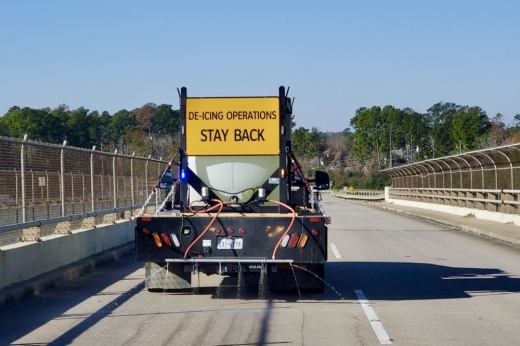The Precinct 3 crews began pretreating bridges with brine on Jan. 12 in preparation for the freeze expected that weekend, Communications Manager Jeannie Peng said.
“This decision was made because of the chance for freezing rain and temperatures forecasted for Sunday, earlier than initially expected,” Peng said.
The details
Precinct 3 Commissioner Tom Ramsey said rather than laying out chat rock as they have done in the past winter seasons, Precinct 3 plans to lay out brine solution.
The brine solution acquired was provided by TxDOT through the County Assistance Program at no charge, Peng said.
“During the last freeze season, we realized that with the size of our new precinct, we needed to adapt to be able to cover over 300 bridges and 6,700 lane miles of roadway to keep them open and safe during winter conditions,” Road and Bridge Director Jennifer Almonte said.
Almonte also said workers can cover an entire route with one tank, minimizing the amount of labor and materials needed.
According to Precinct 3 officials, while chat rocks provide traction control, brine chemically breaks ice as vehicle weight travels the wheel path on roadways and can be used as pretreatment to prevent ice from forming in the first place.
Quote of note
“So this season, when you see those colder temperatures approaching in the forecast, be assured and know that Precinct 3 is out and ready to keep your roads and bridges safe for emergency response vehicles, but more importantly for the traveling public,” Ramsey said.
Did you know?
Almonte said brine is cheaper, is applied more quickly, is more environmentally friendly and can be used to pretreat the roadways.
During pretreatment rounds, workers are set to spray brine solution around 20 mph while de-icing will be sprayed at 5-10 mph to spray a greater volume of brine, Peng said. In the event that de-icing is needed, workers will run routes until temperatures rise back above freezing.
“Typically this means that each bridge will be sprayed every 12-24 hours,” she said.





